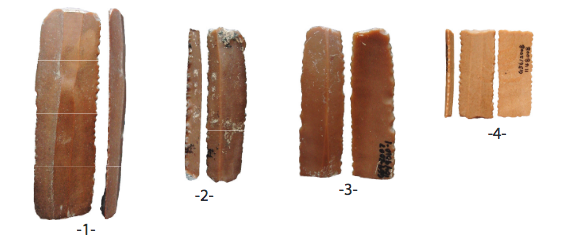
What We Can Learn from the Flint Industries at Tell eṣ-Ṣâfi/Gath
Near Eastern Archaeology, March 2018, “What We Can Learn from the Flint Industries at Tell eṣ-Ṣâfi/Gath” by Francesca Manclossi (Centre de Recherche Français) and Steven A. Rosen (Ben-Gurion University)
Within Levantine archaeology, the analysis of chipped stone tools from the Metal Ages is reasonably well established. Chipped stone tool manufacture is a reductive process, leaving large quantities of diagnostic waste products, allowing detailed reconstruction not only of the specifics of technologies and function, but also of such issues as on-site/off-site production, trade, and degrees of craft specialization—and ultimately offering insights into social and economic processes not always available from other sources. The materials from Tell eṣ-Ṣâfi/Gath from the Early Bronze (EB), Late Bronze (LB), and Iron Ages (IA) provide a long-term view of these processes at the site, and offer a case study for larger-scale processes.

